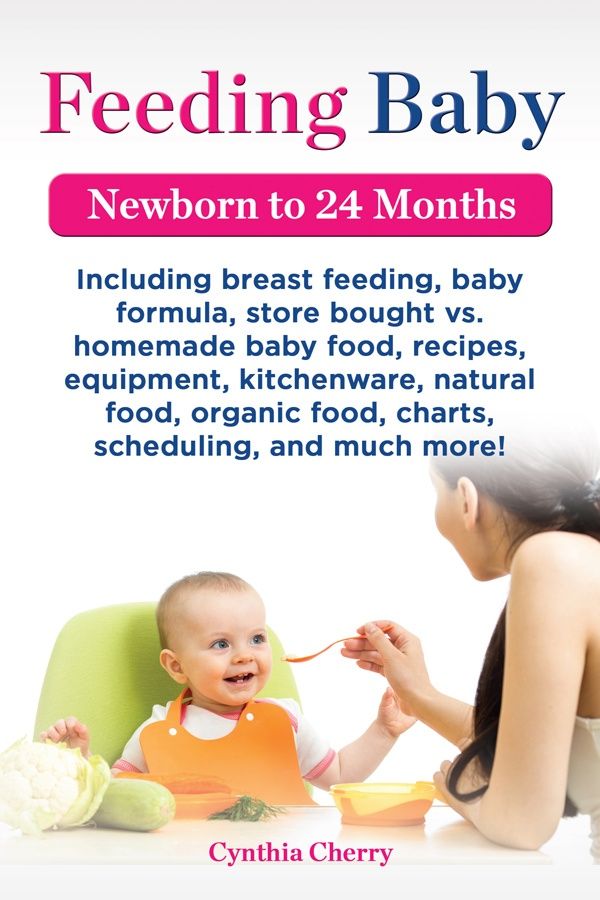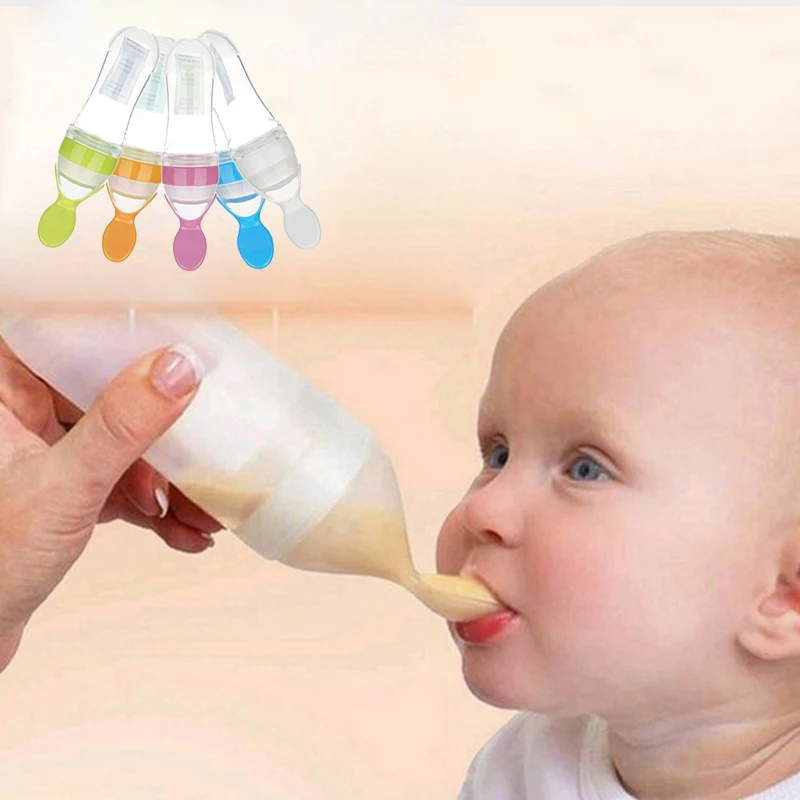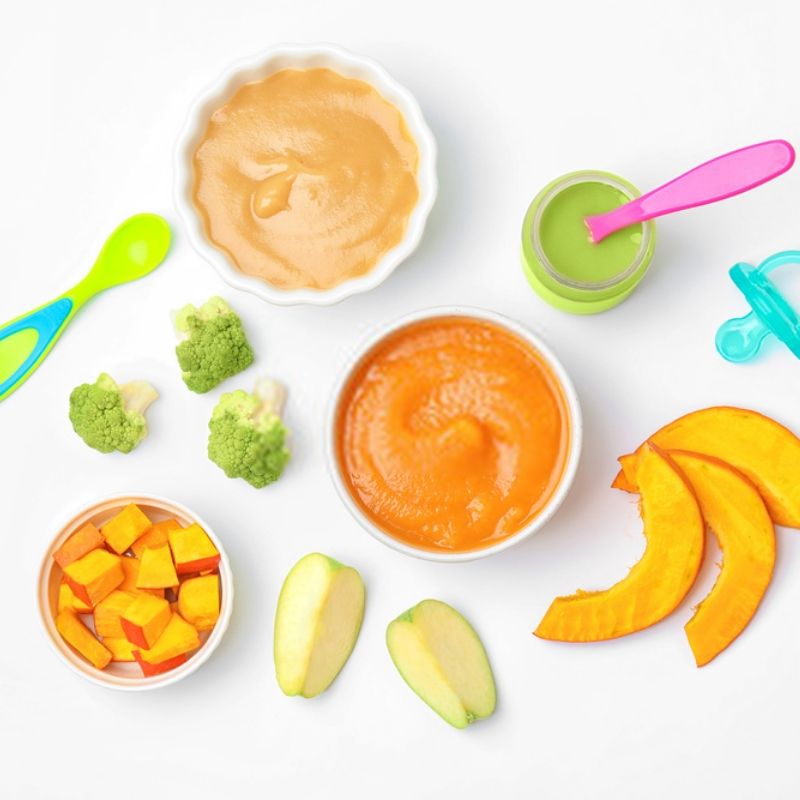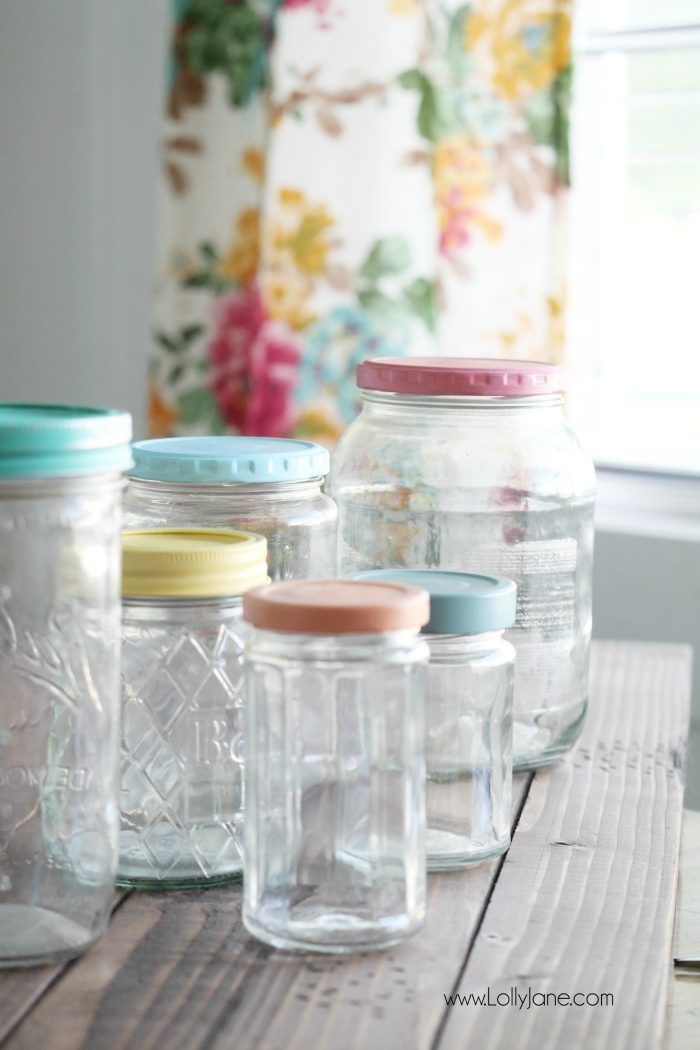Packaged baby food
Jars, Pouches, Organic, and More
Share on PinterestWe include products we think are useful for our readers. If you buy through links on this page, we may earn a small commission. Here’s our process.
After months of breastfeeding or bottle-feeding, it can be surprising to realize that your still-tiny baby is actually ready for “real” food. This exciting (albeit messy!) transition may be a little bittersweet and can feel overwhelming, especially considering the numerous baby food options available in 2022.
We’ve rounded up some of this year’s best baby foods to help you get started on the right foot — er, spoon.
Both the World Health Organization and the American Academy of Pediatrics (AAP) recommend exclusively breastfeeding babies for the first 6 months of life. Formula-fed infants are ready to start solid foods when they start showing signs that they’re ready.
In some cases, you may start solids around 4 or 5 months, but it’s best to discuss this with your pediatrician. If your doctor doesn’t have a different recommendation, most babies are ready to start soft or pureed foods by the time they’re about 6 months old.
If you’re picking commercially prepared baby food (versus making your own), it’s wise to start with simple, one-ingredient baby food. Most commercial baby food is labeled stage 1, 2, or 3 based on the texture and number of ingredients.
For instance, stage 1 baby food has the smoothest texture and typically has one ingredient, such as pureed pears. So, for your 4- to 6-month-old, you’ll want to start with stage 1 baby food.
Starting with one food at a time helps you monitor for any adverse reactions or food allergies. The American Academy of Allergy, Asthma & Immunology recommends monitoring each food for 3 to 5 days.
There isn’t really a perfect first food — the choice is yours! Some good foods to start: infant cereal (preferably oat or whole grain), meat purees such as chicken or turkey, or single-ingredient purees of fruits or veggies.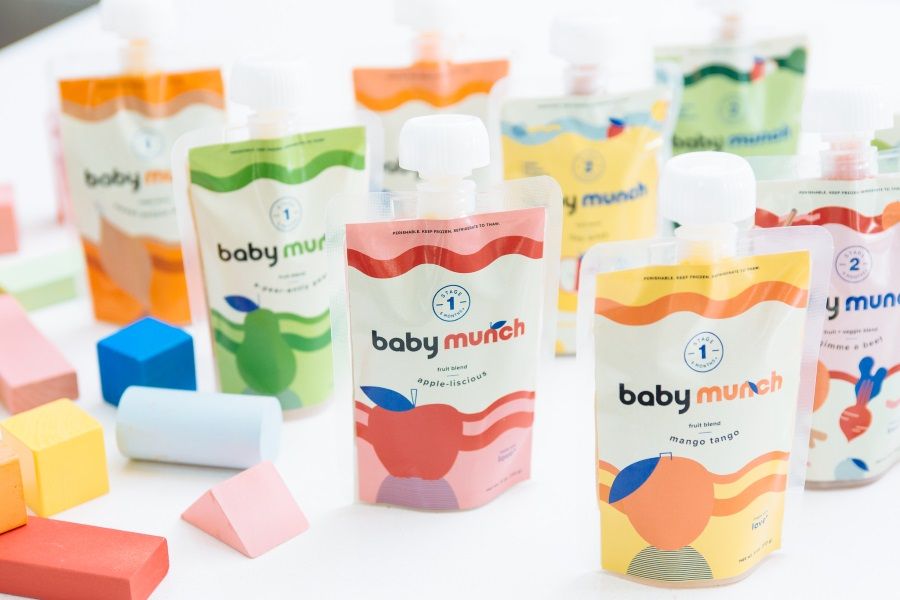
If you’re debating whether to start with fruits or veggies first, the AAP suggests that an infant’s preferences for sweets won’t budge even if veggies are introduced first. Mashed peas just don’t taste as good once you’ve had applesauce.
We chatted with pediatricians, read the research, polled real-life parents, read reviews, and used our own babies as taste testers (although we can’t say their opinions on nutritional value are very authoritative) to bring you some of the top baby food brands available. In addition:
- We looked for foods that are certified USDA organic and have non-GMO verified ingredients.
- We focused on baby food that’s free of added sugar (but have called out one or two products that contain it).
- The baby foods on our list are free of harmful preservatives.
- We called out the brands that market their products as gluten-free and allergen-free.
All products are also vetted by our medical standards team, which evaluates brand integrity and product safety.
Reducing Exposure to Toxic Elements in Baby Foods
Three brands in this article — Gerber, Beech-Nut, and Happy Baby — were mentioned in a February 2021 Congressional Report for products containing significantly high levels of toxic heavy metals, including arsenic, lead, cadmium, and mercury. The FDA has since launched the Closer to Zero: Action Plan for Baby Foods to address exposure to toxic elements from eating baby foods.
- Best overall baby food: Beech-Nut Naturals Stage 1
- Best organic baby food pouches: Plum Organics Stage 1
- Best budget-friendly baby food: Gerber Organic 1st Foods
- Best baby food for constipation: Gerber Natural 1st Foods (Pear)
- Best organic jarred baby food: Happy Baby Organics Clearly Crafted Stage 1
- Best personalized subscription service: Cerebelly
- Best fresh baby food: Once Upon a Farm Cold-Pressed Organic Baby Food
- Best first baby cereal: Gerber Organic 1st Foods Single Grain Cereal
- Best, most interesting baby food blends: Little Spoon Complex Solids
- Best all-around clean baby food: Baby Gourmet
Best overall baby food
Beech-Nut Naturals Stage 1
This affordable baby food is an all-around fan favorite.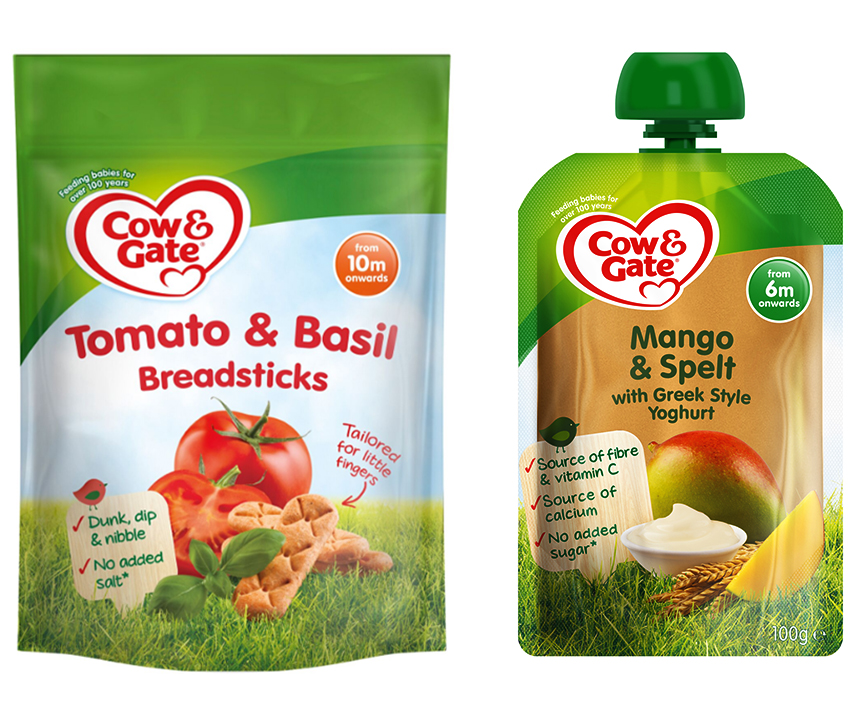 Beech-Nut baby foods come in recyclable glass jars and are available in both natural and organic varieties. Blends are available in every stage, from single-ingredient foods for brand-new eaters (like butternut squash and plum) to multi-food blends with chunkier textures for older babies.
Beech-Nut baby foods come in recyclable glass jars and are available in both natural and organic varieties. Blends are available in every stage, from single-ingredient foods for brand-new eaters (like butternut squash and plum) to multi-food blends with chunkier textures for older babies.
The ingredients in Beech-Nut baby foods are simple, with no artificial additives. Plus, these little glass jars are available at most grocery stores, so they’re easy to find. However, while it’s great for recycling purposes, glass can be dangerous — always supervise your little one around glass.
Beech-Nut Naturals are free of genetically modified organisms (GMOs) but not certified organic (unless you shop their organics line). They contain no added sugar.
Shop now at Walmart
Best organic baby food pouches
Plum Organics Stage 1
If sustainability, organic foods, and non-GMO ingredients are important to you, Plum Organics has a great line of baby food options to try.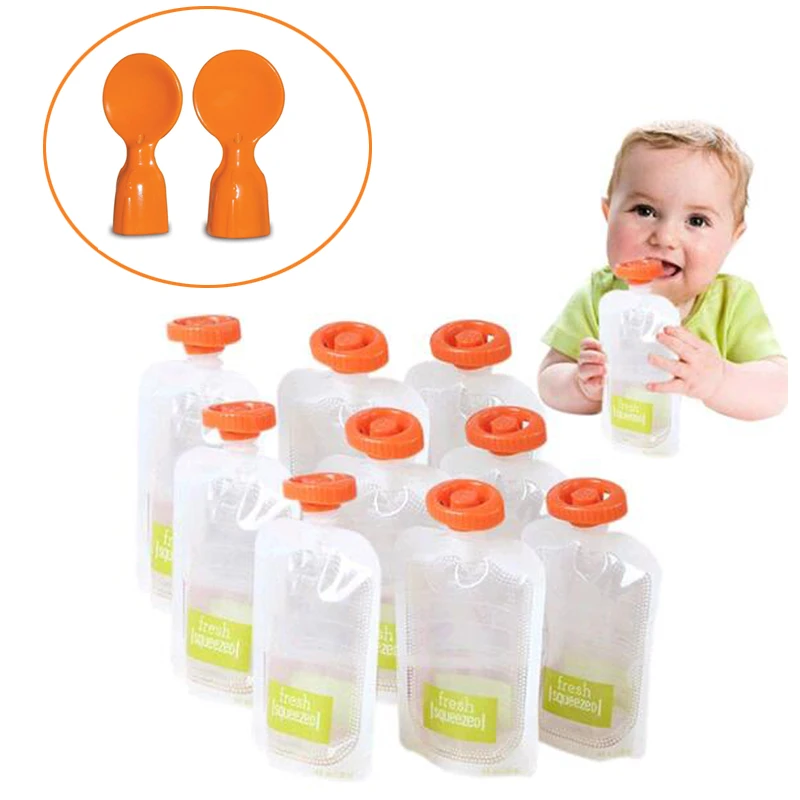
Their BPA-free pouches are super convenient and available in a variety of fruits, veggies, and grains for each stage of eating. These foods have no added salts or sugars, so they’re nutritious and simple for baby’s maturing digestive system. They’re also widely available and can be purchased in bulk for greater savings.
And while feeding experts definitely discourage using pouches exclusively, there’s no denying that pouches are very convenient for occasional on-the-go feedings. To make sure your baby is still progressing in their journey through solid foods, try squeezing the pouch contents into a spoon. And be sure to watch out for the small plastic caps, as they’re a choking hazard.
Plum Organics is certified organic and non-GMO, and their baby food doesn’t contain added sugar.
Shop now at Amazon
Best budget-friendly baby food
Gerber Organic 1st Foods
Gerber is the classic baby food brand, and they’ve made changes over the last few years to make their food more health-conscious (e.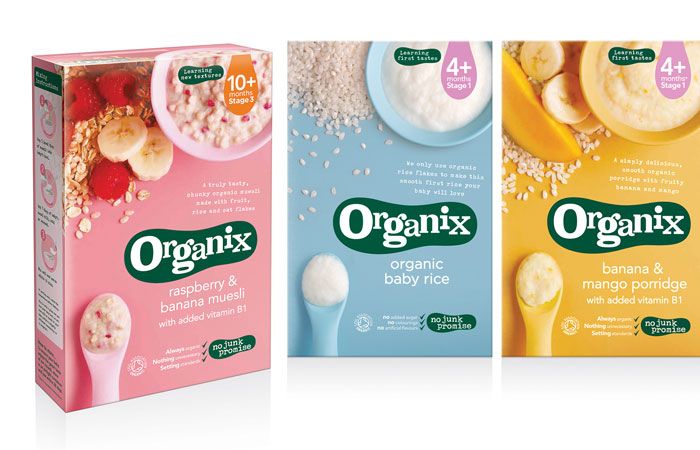 g., starting an organic line). Yet they have maintained their status as one of the most affordable prepared baby food brands on the market.
g., starting an organic line). Yet they have maintained their status as one of the most affordable prepared baby food brands on the market.
They offer benefits like glass jars, organic ingredients, and a wide variety of food choices at a lower cost than some other brands on our list.
Gerber Organic is USDA organic, non-GMO, and free of added sugar.
Shop now at Walmart
Best baby food for constipation
Gerber Natural 1st Foods (Pear)
Sometimes babies get a little constipated when they’re beginning their solid food journey, especially if they’re eating a lot of dairy or iron-fortified cereal. In addition to continuing breast milk, some foods may help relieve your little one’s digestive discomfort, including all the “P” fruits.
So prunes, pears, plums, and peaches are some options to help keep tiny bowels on the move. You can find great fruit purees in any brand on our list, but one of the more cost-effective is the Gerber brand. The good news is that many babies love fruit, so it shouldn’t be too hard to get your little one to down some prunes or pears.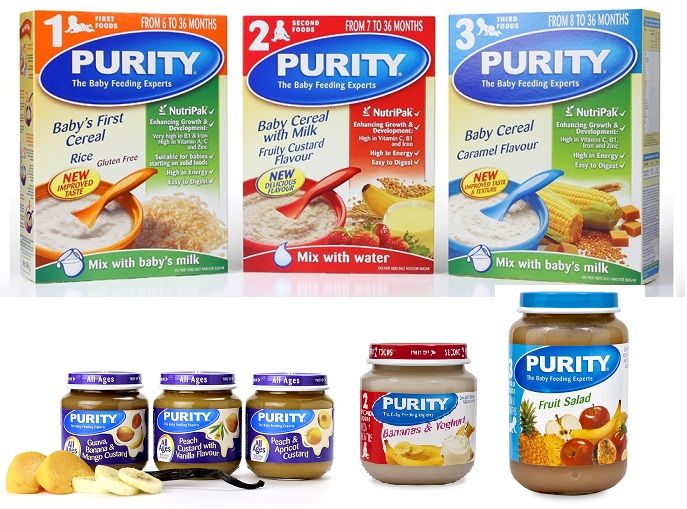
This product is made with non-GMO ingredients and pears grown with Clean Field Farming practices. It doesn’t contain added sugars.
Shop now at Walmart
Best organic jarred baby food
Happy Baby Organics Clearly Crafted Stage 1
Another great organic baby food option, the Happy Baby company offers their organic baby food jars at most stores — although not quite as widely as Beech-Nut and Plum Organics.
Happy Baby jars offer a wide variety of foods, from kale and mango to spinach and peaches and chia seeds. You can start with their single-ingredient jars (this is important for ruling out allergies, as well as to help baby learn to like spinach even when it’s not disguised by pears). Then, you can move on to their fruit and veggie blends as your little one grows.
High quality ingredients, creative flavors, and no artificial ingredients all make Happy Baby a solid (no pun intended) choice.
Happy Baby is USDA organic and doesn’t contain added sugars.
Shop now at Walmart
Best personalized subscription service
Cerebelly
Cerebelly allows you to personalize your subscription of baby food pouches based on your child’s age, leaning on science to determine what foods will benefit them at their stage of development.
You’ll take a quiz that asks about the current development and language cues your baby is showing (responding to their name, grasping toys, using noises to show emotion, etc.). It also asks about motor, social, and visual skills.
The results will clue you in on key nutrients that may benefit your little one and customize your baby food pouches based on this.
To boot, the brand has earned the Clean Label Project Purity Award (which evaluates products for toxins and contaminants), is certified USDA organic, and contains no added sugars.
Shop now at Cerebelly
Best fresh baby food
Once Upon a Farm Cold-Pressed Organic Baby Food
These organic, cold-pressed baby food pouches and cups are found in the refrigerated section at your grocery store (and yes, they have to be refrigerated at home).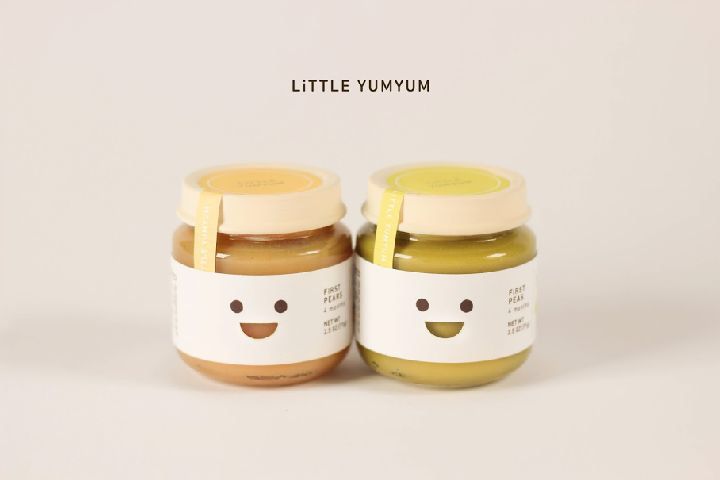 The company also has a subscription delivery option to make baby food even more convenient for your busy schedule.
The company also has a subscription delivery option to make baby food even more convenient for your busy schedule.
Creative names like Wild Rumpus Avocado and Magic Velvet Mango will have you smiling, and the variety of flavors will (hopefully!) appeal to your little one. Once Upon a Farm offers a variety of food stages, so you can start with their purees and move on up to their finger and toddler foods as your baby grows.
Once Upon a Farm is certified organic and non-GMO. Their products contain no added sugars and are Clean Label Project certified.
Shop now at Target
Best first baby cereal
Gerber Organic 1st Foods Single Grain Cereal
This simple cereal is a great first food for baby. You can mix this one-ingredient whole grain cereal with breast milk, formula, or water to provide your little one with some crucial nutrients (such as iron) and experience with spoons and textures.
The AAP recommends oatmeal or multigrain cereals over rice cereals, as they have a lower risk of exposure to chemicals such as arsenic (which is sometimes a concern with rice products).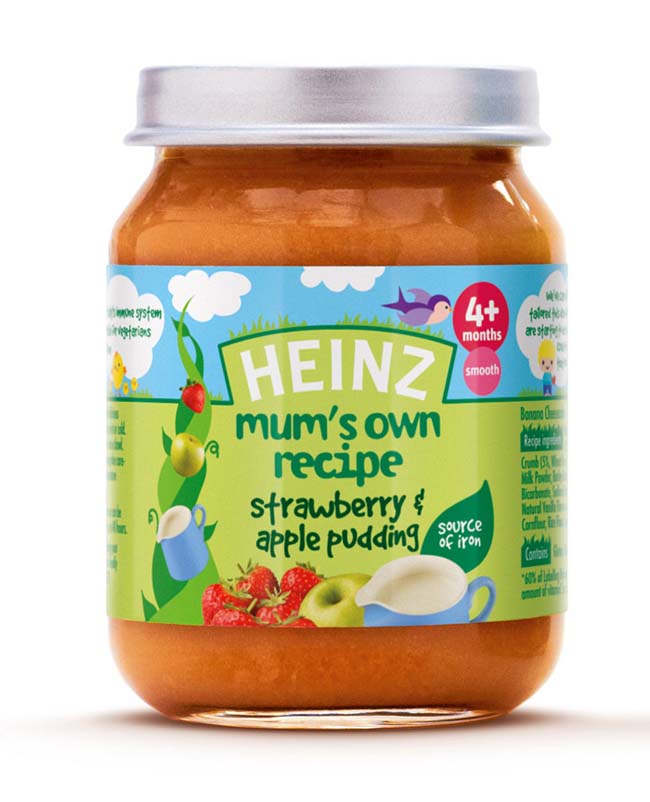
As your baby gets used to other foods, you can also mix this cereal with fruit or yogurt to provide a heartier meal.
Gerber Organic is certified USDA organic and non-GMO, but this product does contain some added sugars.
Shop now at Walmart
Best, most interesting baby food blends
Little Spoon Complex Solids
Once your baby is ready for more advanced blends, Little Spoon has a unique line of complex blends that contain multiple purees as well as other seeds and grains for texture.
For example, one blend contains quinoa, butternut squash, and apple. Another contains kale, white bean, pear, basil, quinoa, and avocado oil.
Little Spoon purees use certified organic and non-GMO ingredients. They’re free of added sugar.
Shop now at Little Spoon
Best all-around clean baby food
Baby Gourmet
Baby Gourmet is another Clean Label Project Purity Award winner, which means they go above and beyond to ensure their baby food is free of harmful toxins that naturally occur in the environment.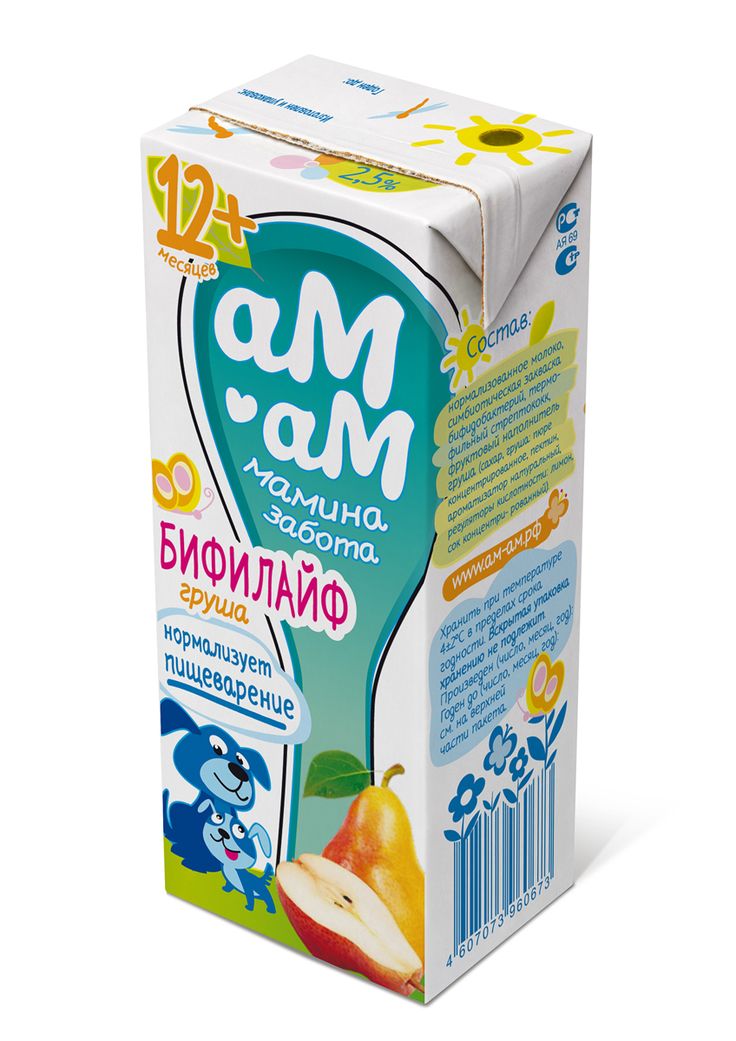
This Canadian company is also set to donate 1 million meals to vulnerable populations by 2025. It’s founded and run by moms, which can be reassuring.
Baby Gourmet is certified organic and non-GMO by both U.S. and Canadian standards. All packaging is BPA-free. Products contain no added sugar.
Shop now at Baby Gourmet
As a general guideline, it’s a good idea to start with iron-fortified baby cereals or pureed meats if your infant is breastfed. Breastfed babies are more likely to need extra iron than formula-fed babies.
It’s also advisable to start with simple, single-ingredient purees of meat, vegetables, and fruits.
Choosing brands that are certified organic, use BPA-free materials, and are conscious of using whole food ingredients (e.g., they don’t add “extras” like salt, sugar, or corn syrup) helps ensure a healthy start for your little one.
According to the AAP, you shouldn’t give babies under age 1 cow’s milk, honey, unpasteurized dairy, or undercooked meat, as these can be an infection risk for a baby’s developing immune system.
You’ll also want to avoid foods that are hard or sharp or present a choking risk (for instance, chips, nuts, popcorn, raisins, raw apples, raw carrots, whole grapes, hot dogs). For a more comprehensive guide to which foods to give and what to avoid, check out our article on infant nutrition and starting solids.
While experts used to advise waiting to introduce highly allergenic foods (such as dairy, wheat, nuts, and eggs) until after the first year, the experts now say that delayed introduction of these foods may increase a child’s risk of food allergies. So, with the guidance of your pediatrician, go ahead and introduce those foods within the first year.
Seek immediate emergency medical attention if you notice swelling of the tongue and mouth, wheezing, or trouble breathing after your child eats certain foods
Some babies are raring to go when it comes to trying food, while others may take a little more convincing. Either way, definitely get your camera on video mode, as there are bound to be some hilarious faces and some impressive food spillage along the way.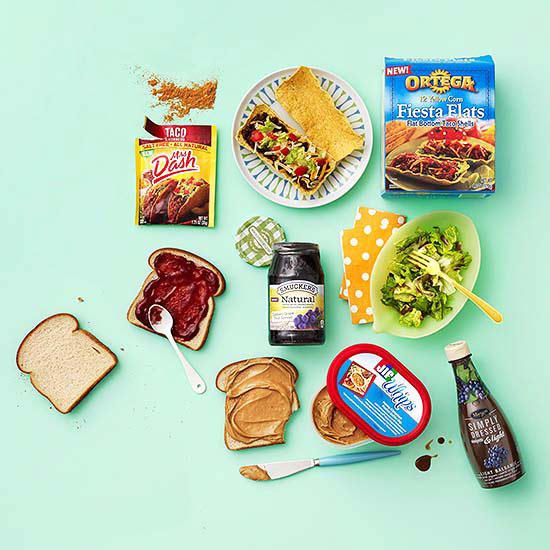
Here are some pro tips to help make the process as smooth as possible:
- Wait until your baby shows signs of readiness for solid food.
- Keep trying. It can take 5 to 10 exposures for a baby to accept a new food.
- Make it fun and silly.
- Cook and eat as a family as much as possible.
- Let your baby play with the spoon and even the food! While incredibly messy, this helps them get comfortable with the textures, smells, and tastes of new foods.
- Talk with your pediatrician if you have any questions or concerns. They’re a great resource and want to help you grow a happy, healthy baby.
What’s the best baby food for growth and weight gain?
If your baby is under 6 months and breastfeeding, it’s recommended that you stick to that exclusively for 6 months. When you’re ready to introduce solids after 6 months, it should be in addition to breastfeeding and formula, not as a replacement.
If your baby is formula-fed, they may begin eating solids sooner than 6 months.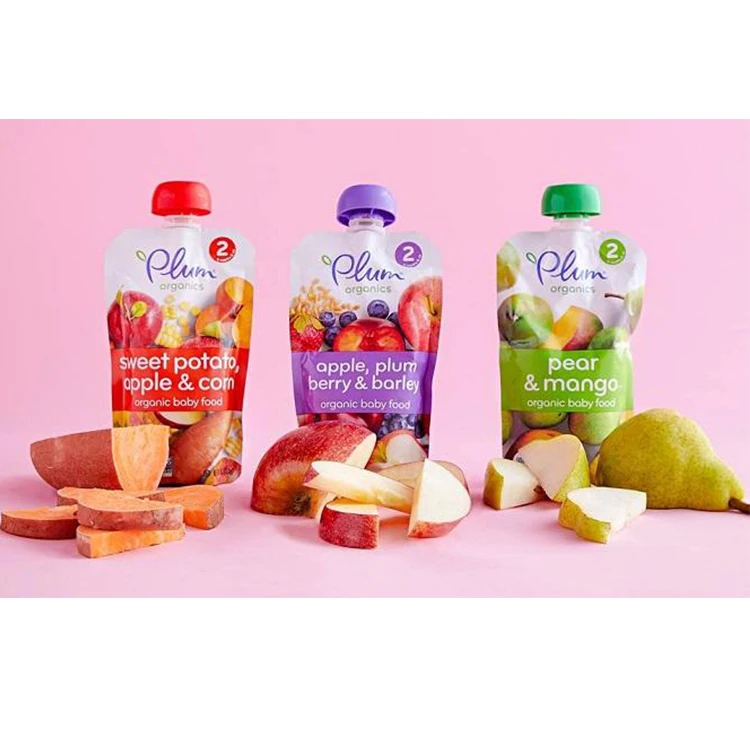 While no one specific food is recommended, a variety of foods and colors is best, including meats, vegetables, and fruits. One of the key foods that can help with growth and weight gain is avocados (high in healthy fats and fiber but low in sugar).
While no one specific food is recommended, a variety of foods and colors is best, including meats, vegetables, and fruits. One of the key foods that can help with growth and weight gain is avocados (high in healthy fats and fiber but low in sugar).
Always discuss your baby’s dietary changes with your pediatrician and attend regular checkups to monitor growth.
What’s the easiest food for babies to digest?
Just like adults, babies do best with regular bowel movements. If they’re having a hard time with this, oatmeal is one food known to be easy to digest and promote regularity, as it contains higher amounts of dietary fiber.
It may also help to focus on quantity. Try feeding your baby smaller meals more often, rather than fewer larger meals. This may be easier on their system and allow them to digest foods more easily.
What’s the best baby food to start with?
Mashed banana and avocado are some of the most popular solids to start with. Soft, ground oatmeal is also great. When it comes to fruit and vegetable purees, focus on variety, but don’t overdo it with those that are naturally high in sugar (such as berry purees).
When it comes to fruit and vegetable purees, focus on variety, but don’t overdo it with those that are naturally high in sugar (such as berry purees).
Most importantly, at 6 months old, all foods should still be pureed and cooked. Once your baby is 9 months old and older, you can start to introduce vegetables cut into pieces. The only other no-no is honey, which they shouldn’t have until they’re over a year old.
It can feel like a lot of pressure to choose the best nutrition for your child, especially when trying to capitalize on the years before they start demanding chicken nuggets and ice cream. But there are a lot of great, healthy options available in 2022.
Whether you choose to make your own baby food, buy jars or pouches, or use a baby food subscription service, there are a number of resources to help you feed your baby.
Jars, Pouches, Organic, and More
Share on PinterestWe include products we think are useful for our readers. If you buy through links on this page, we may earn a small commission. Here’s our process.
Here’s our process.
After months of breastfeeding or bottle-feeding, it can be surprising to realize that your still-tiny baby is actually ready for “real” food. This exciting (albeit messy!) transition may be a little bittersweet and can feel overwhelming, especially considering the numerous baby food options available in 2022.
We’ve rounded up some of this year’s best baby foods to help you get started on the right foot — er, spoon.
Both the World Health Organization and the American Academy of Pediatrics (AAP) recommend exclusively breastfeeding babies for the first 6 months of life. Formula-fed infants are ready to start solid foods when they start showing signs that they’re ready.
In some cases, you may start solids around 4 or 5 months, but it’s best to discuss this with your pediatrician. If your doctor doesn’t have a different recommendation, most babies are ready to start soft or pureed foods by the time they’re about 6 months old.
If you’re picking commercially prepared baby food (versus making your own), it’s wise to start with simple, one-ingredient baby food.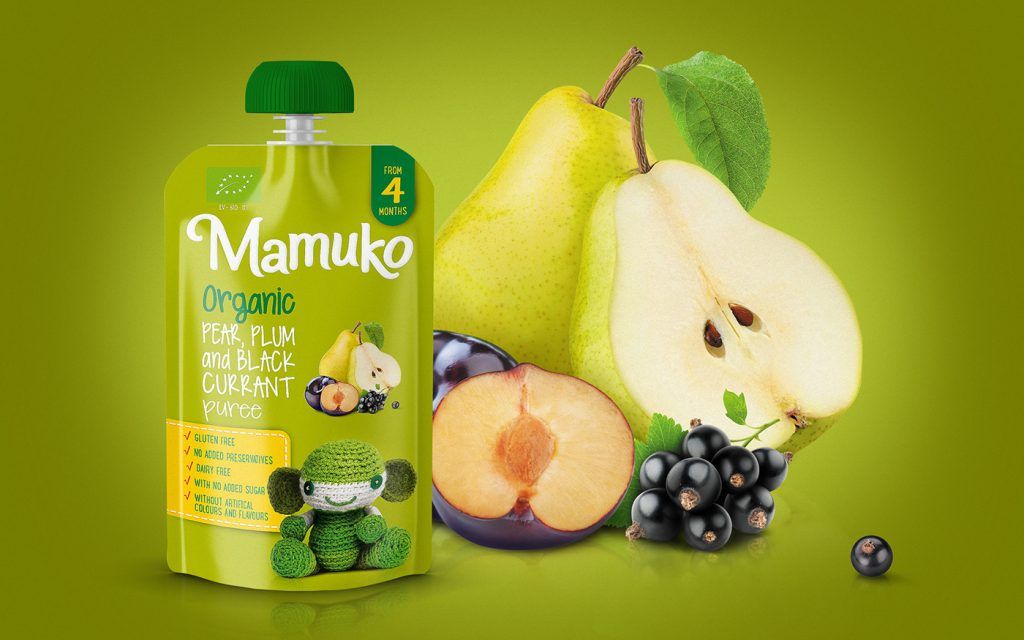 Most commercial baby food is labeled stage 1, 2, or 3 based on the texture and number of ingredients.
Most commercial baby food is labeled stage 1, 2, or 3 based on the texture and number of ingredients.
For instance, stage 1 baby food has the smoothest texture and typically has one ingredient, such as pureed pears. So, for your 4- to 6-month-old, you’ll want to start with stage 1 baby food.
Starting with one food at a time helps you monitor for any adverse reactions or food allergies. The American Academy of Allergy, Asthma & Immunology recommends monitoring each food for 3 to 5 days.
There isn’t really a perfect first food — the choice is yours! Some good foods to start: infant cereal (preferably oat or whole grain), meat purees such as chicken or turkey, or single-ingredient purees of fruits or veggies.
If you’re debating whether to start with fruits or veggies first, the AAP suggests that an infant’s preferences for sweets won’t budge even if veggies are introduced first. Mashed peas just don’t taste as good once you’ve had applesauce.
We chatted with pediatricians, read the research, polled real-life parents, read reviews, and used our own babies as taste testers (although we can’t say their opinions on nutritional value are very authoritative) to bring you some of the top baby food brands available. In addition:
In addition:
- We looked for foods that are certified USDA organic and have non-GMO verified ingredients.
- We focused on baby food that’s free of added sugar (but have called out one or two products that contain it).
- The baby foods on our list are free of harmful preservatives.
- We called out the brands that market their products as gluten-free and allergen-free.
All products are also vetted by our medical standards team, which evaluates brand integrity and product safety.
Reducing Exposure to Toxic Elements in Baby Foods
Three brands in this article — Gerber, Beech-Nut, and Happy Baby — were mentioned in a February 2021 Congressional Report for products containing significantly high levels of toxic heavy metals, including arsenic, lead, cadmium, and mercury. The FDA has since launched the Closer to Zero: Action Plan for Baby Foods to address exposure to toxic elements from eating baby foods.
- Best overall baby food: Beech-Nut Naturals Stage 1
- Best organic baby food pouches: Plum Organics Stage 1
- Best budget-friendly baby food: Gerber Organic 1st Foods
- Best baby food for constipation: Gerber Natural 1st Foods (Pear)
- Best organic jarred baby food: Happy Baby Organics Clearly Crafted Stage 1
- Best personalized subscription service: Cerebelly
- Best fresh baby food: Once Upon a Farm Cold-Pressed Organic Baby Food
- Best first baby cereal: Gerber Organic 1st Foods Single Grain Cereal
- Best, most interesting baby food blends: Little Spoon Complex Solids
- Best all-around clean baby food: Baby Gourmet
Best overall baby food
Beech-Nut Naturals Stage 1
This affordable baby food is an all-around fan favorite. Beech-Nut baby foods come in recyclable glass jars and are available in both natural and organic varieties. Blends are available in every stage, from single-ingredient foods for brand-new eaters (like butternut squash and plum) to multi-food blends with chunkier textures for older babies.
Beech-Nut baby foods come in recyclable glass jars and are available in both natural and organic varieties. Blends are available in every stage, from single-ingredient foods for brand-new eaters (like butternut squash and plum) to multi-food blends with chunkier textures for older babies.
The ingredients in Beech-Nut baby foods are simple, with no artificial additives. Plus, these little glass jars are available at most grocery stores, so they’re easy to find. However, while it’s great for recycling purposes, glass can be dangerous — always supervise your little one around glass.
Beech-Nut Naturals are free of genetically modified organisms (GMOs) but not certified organic (unless you shop their organics line). They contain no added sugar.
Shop now at Walmart
Best organic baby food pouches
Plum Organics Stage 1
If sustainability, organic foods, and non-GMO ingredients are important to you, Plum Organics has a great line of baby food options to try.
Their BPA-free pouches are super convenient and available in a variety of fruits, veggies, and grains for each stage of eating. These foods have no added salts or sugars, so they’re nutritious and simple for baby’s maturing digestive system. They’re also widely available and can be purchased in bulk for greater savings.
And while feeding experts definitely discourage using pouches exclusively, there’s no denying that pouches are very convenient for occasional on-the-go feedings. To make sure your baby is still progressing in their journey through solid foods, try squeezing the pouch contents into a spoon. And be sure to watch out for the small plastic caps, as they’re a choking hazard.
Plum Organics is certified organic and non-GMO, and their baby food doesn’t contain added sugar.
Shop now at Amazon
Best budget-friendly baby food
Gerber Organic 1st Foods
Gerber is the classic baby food brand, and they’ve made changes over the last few years to make their food more health-conscious (e. g., starting an organic line). Yet they have maintained their status as one of the most affordable prepared baby food brands on the market.
g., starting an organic line). Yet they have maintained their status as one of the most affordable prepared baby food brands on the market.
They offer benefits like glass jars, organic ingredients, and a wide variety of food choices at a lower cost than some other brands on our list.
Gerber Organic is USDA organic, non-GMO, and free of added sugar.
Shop now at Walmart
Best baby food for constipation
Gerber Natural 1st Foods (Pear)
Sometimes babies get a little constipated when they’re beginning their solid food journey, especially if they’re eating a lot of dairy or iron-fortified cereal. In addition to continuing breast milk, some foods may help relieve your little one’s digestive discomfort, including all the “P” fruits.
So prunes, pears, plums, and peaches are some options to help keep tiny bowels on the move. You can find great fruit purees in any brand on our list, but one of the more cost-effective is the Gerber brand. The good news is that many babies love fruit, so it shouldn’t be too hard to get your little one to down some prunes or pears.
This product is made with non-GMO ingredients and pears grown with Clean Field Farming practices. It doesn’t contain added sugars.
Shop now at Walmart
Best organic jarred baby food
Happy Baby Organics Clearly Crafted Stage 1
Another great organic baby food option, the Happy Baby company offers their organic baby food jars at most stores — although not quite as widely as Beech-Nut and Plum Organics.
Happy Baby jars offer a wide variety of foods, from kale and mango to spinach and peaches and chia seeds. You can start with their single-ingredient jars (this is important for ruling out allergies, as well as to help baby learn to like spinach even when it’s not disguised by pears). Then, you can move on to their fruit and veggie blends as your little one grows.
High quality ingredients, creative flavors, and no artificial ingredients all make Happy Baby a solid (no pun intended) choice.
Happy Baby is USDA organic and doesn’t contain added sugars.
Shop now at Walmart
Best personalized subscription service
Cerebelly
Cerebelly allows you to personalize your subscription of baby food pouches based on your child’s age, leaning on science to determine what foods will benefit them at their stage of development.
You’ll take a quiz that asks about the current development and language cues your baby is showing (responding to their name, grasping toys, using noises to show emotion, etc.). It also asks about motor, social, and visual skills.
The results will clue you in on key nutrients that may benefit your little one and customize your baby food pouches based on this.
To boot, the brand has earned the Clean Label Project Purity Award (which evaluates products for toxins and contaminants), is certified USDA organic, and contains no added sugars.
Shop now at Cerebelly
Best fresh baby food
Once Upon a Farm Cold-Pressed Organic Baby Food
These organic, cold-pressed baby food pouches and cups are found in the refrigerated section at your grocery store (and yes, they have to be refrigerated at home). The company also has a subscription delivery option to make baby food even more convenient for your busy schedule.
The company also has a subscription delivery option to make baby food even more convenient for your busy schedule.
Creative names like Wild Rumpus Avocado and Magic Velvet Mango will have you smiling, and the variety of flavors will (hopefully!) appeal to your little one. Once Upon a Farm offers a variety of food stages, so you can start with their purees and move on up to their finger and toddler foods as your baby grows.
Once Upon a Farm is certified organic and non-GMO. Their products contain no added sugars and are Clean Label Project certified.
Shop now at Target
Best first baby cereal
Gerber Organic 1st Foods Single Grain Cereal
This simple cereal is a great first food for baby. You can mix this one-ingredient whole grain cereal with breast milk, formula, or water to provide your little one with some crucial nutrients (such as iron) and experience with spoons and textures.
The AAP recommends oatmeal or multigrain cereals over rice cereals, as they have a lower risk of exposure to chemicals such as arsenic (which is sometimes a concern with rice products).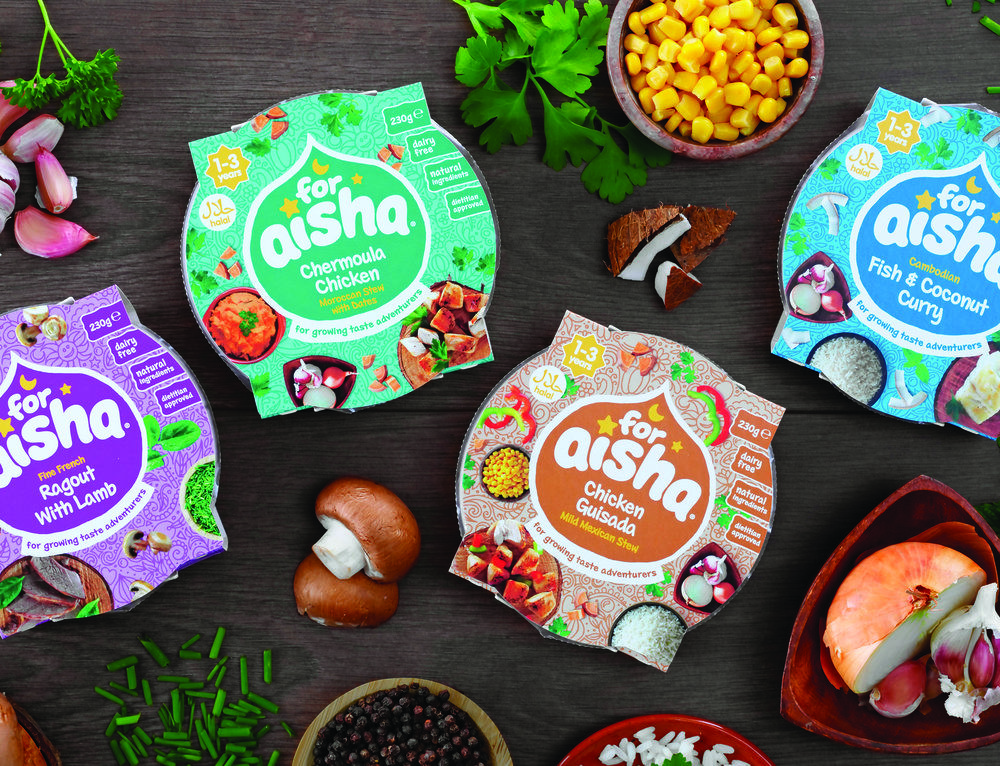
As your baby gets used to other foods, you can also mix this cereal with fruit or yogurt to provide a heartier meal.
Gerber Organic is certified USDA organic and non-GMO, but this product does contain some added sugars.
Shop now at Walmart
Best, most interesting baby food blends
Little Spoon Complex Solids
Once your baby is ready for more advanced blends, Little Spoon has a unique line of complex blends that contain multiple purees as well as other seeds and grains for texture.
For example, one blend contains quinoa, butternut squash, and apple. Another contains kale, white bean, pear, basil, quinoa, and avocado oil.
Little Spoon purees use certified organic and non-GMO ingredients. They’re free of added sugar.
Shop now at Little Spoon
Best all-around clean baby food
Baby Gourmet
Baby Gourmet is another Clean Label Project Purity Award winner, which means they go above and beyond to ensure their baby food is free of harmful toxins that naturally occur in the environment.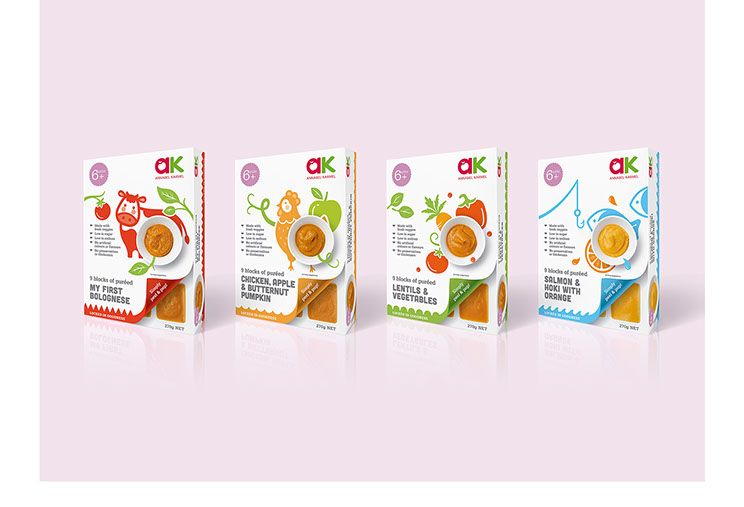
This Canadian company is also set to donate 1 million meals to vulnerable populations by 2025. It’s founded and run by moms, which can be reassuring.
Baby Gourmet is certified organic and non-GMO by both U.S. and Canadian standards. All packaging is BPA-free. Products contain no added sugar.
Shop now at Baby Gourmet
As a general guideline, it’s a good idea to start with iron-fortified baby cereals or pureed meats if your infant is breastfed. Breastfed babies are more likely to need extra iron than formula-fed babies.
It’s also advisable to start with simple, single-ingredient purees of meat, vegetables, and fruits.
Choosing brands that are certified organic, use BPA-free materials, and are conscious of using whole food ingredients (e.g., they don’t add “extras” like salt, sugar, or corn syrup) helps ensure a healthy start for your little one.
According to the AAP, you shouldn’t give babies under age 1 cow’s milk, honey, unpasteurized dairy, or undercooked meat, as these can be an infection risk for a baby’s developing immune system.
You’ll also want to avoid foods that are hard or sharp or present a choking risk (for instance, chips, nuts, popcorn, raisins, raw apples, raw carrots, whole grapes, hot dogs). For a more comprehensive guide to which foods to give and what to avoid, check out our article on infant nutrition and starting solids.
While experts used to advise waiting to introduce highly allergenic foods (such as dairy, wheat, nuts, and eggs) until after the first year, the experts now say that delayed introduction of these foods may increase a child’s risk of food allergies. So, with the guidance of your pediatrician, go ahead and introduce those foods within the first year.
Seek immediate emergency medical attention if you notice swelling of the tongue and mouth, wheezing, or trouble breathing after your child eats certain foods
Some babies are raring to go when it comes to trying food, while others may take a little more convincing. Either way, definitely get your camera on video mode, as there are bound to be some hilarious faces and some impressive food spillage along the way.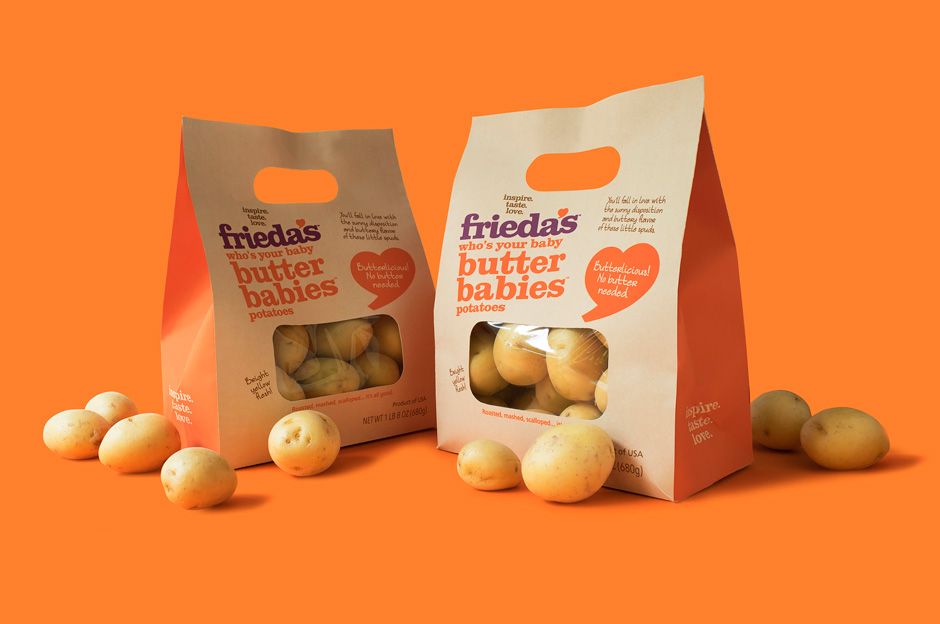
Here are some pro tips to help make the process as smooth as possible:
- Wait until your baby shows signs of readiness for solid food.
- Keep trying. It can take 5 to 10 exposures for a baby to accept a new food.
- Make it fun and silly.
- Cook and eat as a family as much as possible.
- Let your baby play with the spoon and even the food! While incredibly messy, this helps them get comfortable with the textures, smells, and tastes of new foods.
- Talk with your pediatrician if you have any questions or concerns. They’re a great resource and want to help you grow a happy, healthy baby.
What’s the best baby food for growth and weight gain?
If your baby is under 6 months and breastfeeding, it’s recommended that you stick to that exclusively for 6 months. When you’re ready to introduce solids after 6 months, it should be in addition to breastfeeding and formula, not as a replacement.
If your baby is formula-fed, they may begin eating solids sooner than 6 months.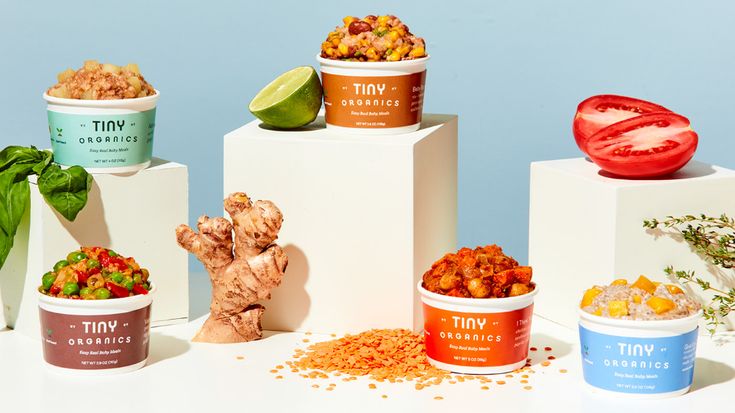 While no one specific food is recommended, a variety of foods and colors is best, including meats, vegetables, and fruits. One of the key foods that can help with growth and weight gain is avocados (high in healthy fats and fiber but low in sugar).
While no one specific food is recommended, a variety of foods and colors is best, including meats, vegetables, and fruits. One of the key foods that can help with growth and weight gain is avocados (high in healthy fats and fiber but low in sugar).
Always discuss your baby’s dietary changes with your pediatrician and attend regular checkups to monitor growth.
What’s the easiest food for babies to digest?
Just like adults, babies do best with regular bowel movements. If they’re having a hard time with this, oatmeal is one food known to be easy to digest and promote regularity, as it contains higher amounts of dietary fiber.
It may also help to focus on quantity. Try feeding your baby smaller meals more often, rather than fewer larger meals. This may be easier on their system and allow them to digest foods more easily.
What’s the best baby food to start with?
Mashed banana and avocado are some of the most popular solids to start with. Soft, ground oatmeal is also great.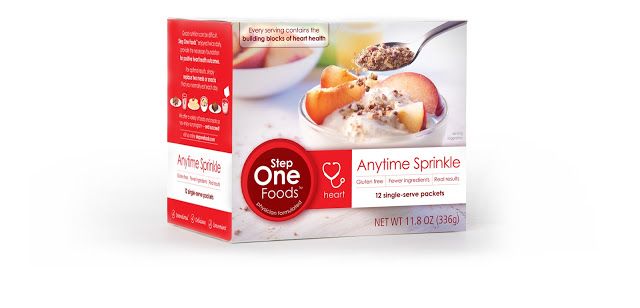 When it comes to fruit and vegetable purees, focus on variety, but don’t overdo it with those that are naturally high in sugar (such as berry purees).
When it comes to fruit and vegetable purees, focus on variety, but don’t overdo it with those that are naturally high in sugar (such as berry purees).
Most importantly, at 6 months old, all foods should still be pureed and cooked. Once your baby is 9 months old and older, you can start to introduce vegetables cut into pieces. The only other no-no is honey, which they shouldn’t have until they’re over a year old.
It can feel like a lot of pressure to choose the best nutrition for your child, especially when trying to capitalize on the years before they start demanding chicken nuggets and ice cream. But there are a lot of great, healthy options available in 2022.
Whether you choose to make your own baby food, buy jars or pouches, or use a baby food subscription service, there are a number of resources to help you feed your baby.
Trends in baby food packaging: packaging as a toy, a means of communication with parents and an element of eco-strategy
The choice of baby food in Russian retail is huge! Manufacturers are exercising original packaging solutions to attract young parents.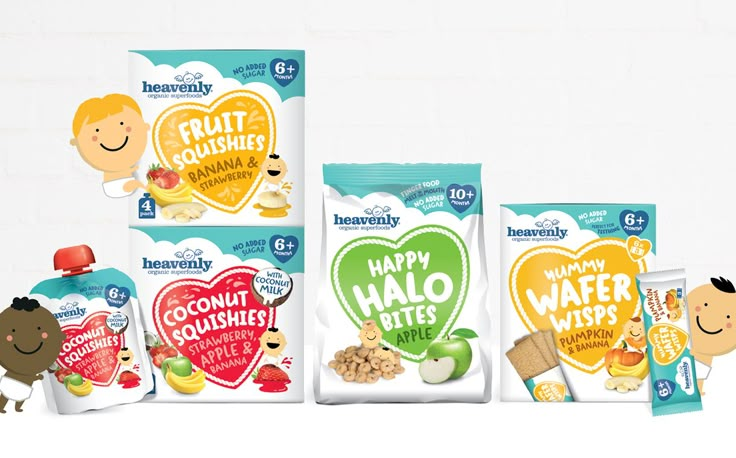 The packaging of baby food has its own trends - it is with the help of packaging that brands develop children, conduct a dialogue with parents, or even prepare babies for adulthood.
The packaging of baby food has its own trends - it is with the help of packaging that brands develop children, conduct a dialogue with parents, or even prepare babies for adulthood.
Coming to the store, the buyer faces a large selection of goods. Packaging helps him make a decision. Often these criteria are standard - attractiveness and informativeness. As for baby food, for parents, the main indicators are the quality and safety of the product. But the convenience of packaging becomes its additional bonus.
We talk about Russian and international experience in attracting the attention of customers using the examples of several brands that produce baby food.
Packaging as a toy
The first thing to mention is the spiders. This is the most "fresh" innovation in the category of baby food, which appeared in Russia much later than in the West. The word “spiders” is still unusual even for experienced parents, and you can often hear the wording “soft packaging”.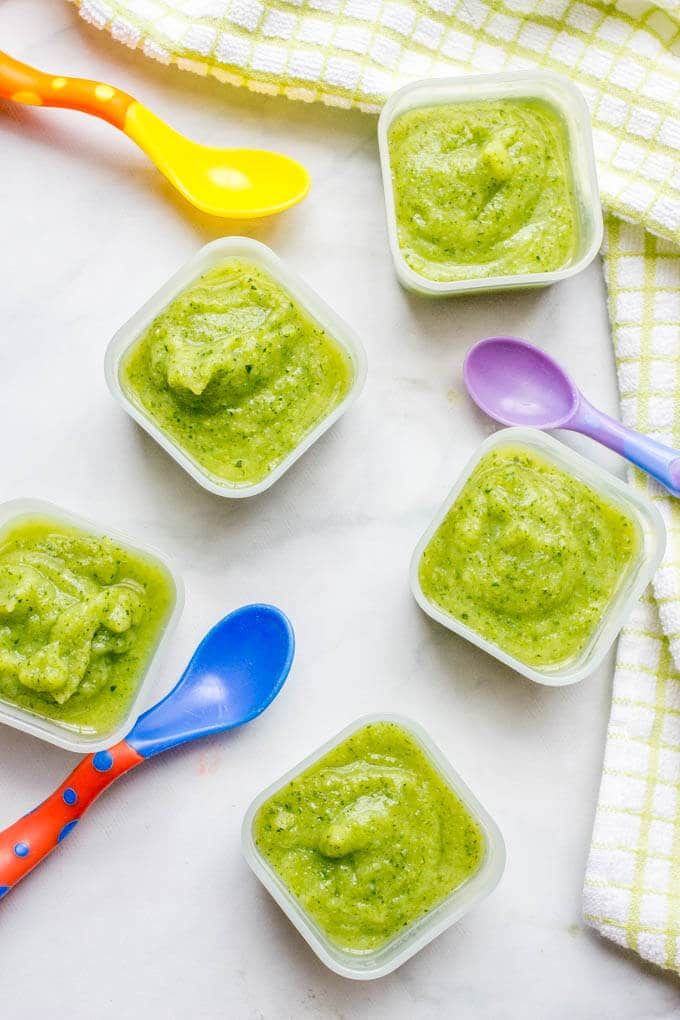 But now such containers are used in more and more categories, they are used for classic fruit purees, and for dry cereals. One of the main advantages of this package is that it is difficult for a child to get dirty or spill the contents. In addition, spiders are convenient for moms, they are light and compact, they can be taken for a walk or on the road.
But now such containers are used in more and more categories, they are used for classic fruit purees, and for dry cereals. One of the main advantages of this package is that it is difficult for a child to get dirty or spill the contents. In addition, spiders are convenient for moms, they are light and compact, they can be taken for a walk or on the road.
All children love toys. Therefore, it is obvious to use this emotional component in the packaging of baby food. The FrutoNyanya brand followed this path when it offered toy covers to its consumers.
“Our pouch-packed fruit purees come with a special certified toy lid, thanks to which the child can learn colors and count, collect various figures, which in the end can positively influence fine motor skills. For our youngest consumers, we produce fruit-shaped pouch packs to introduce the baby to the first fruits,” says Anna Ivanova Marketing Director of PROGRESS JSC, manufacturer of the FrutoNyanya brand .
Such entertainment also brings up perseverance and independence, stimulates positive emotions.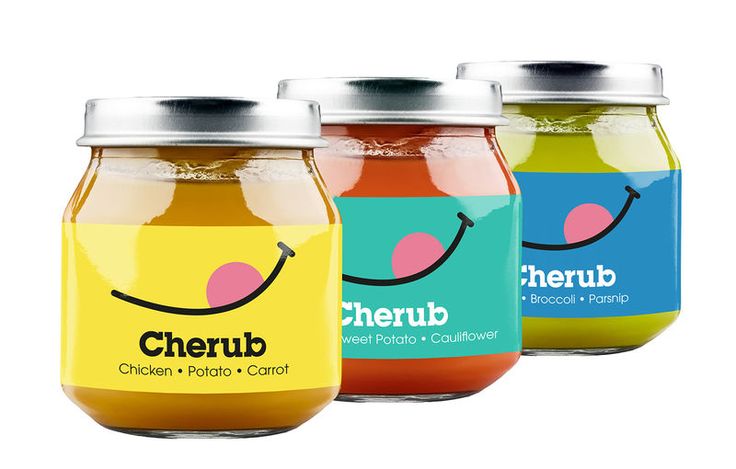 Frutolids are hexagonal with 2 and 3 notches on the sides. And thanks to these grooves, they interlock with each other quite tightly. They can be assembled not only in a plane, but also to build multi-level structures, developing the child's imagination.
Frutolids are hexagonal with 2 and 3 notches on the sides. And thanks to these grooves, they interlock with each other quite tightly. They can be assembled not only in a plane, but also to build multi-level structures, developing the child's imagination.
Packaging as a tool for dialogue
The next trend in packaging is to communicate with parents. Now manufacturers are striving for the most open dialogue with the consumer. Full information about the composition is placed on the label inscription. In this composition, the consumer understands all the ingredients, there are no abbreviations.
Producers of baby food talk about the production, methods of growing vegetables and fruits, and their suppliers. This trend is also reflected in the packaging – the transparency of the packaging is becoming an important way of communication. For example, transparent labels, fully or partially transparent packaging.
Packaging as an element of eco-responsibility
Another important component of packaging is its tactile qualities, dullness, craft solutions.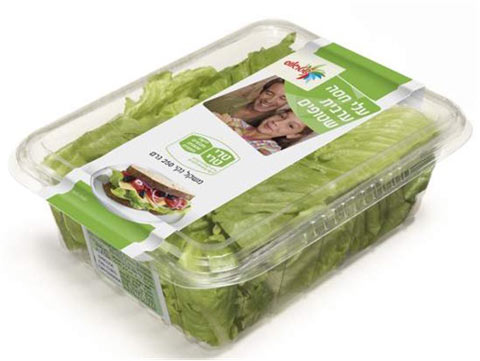 Consumers are increasingly interested in features that make packaging easier to recycle and reuse. For example, completely biodegradable materials or materials that can be used as fertilizer, or even edible materials. But this trend is still in its infancy in Russia, in the future we will see more completed projects.
Consumers are increasingly interested in features that make packaging easier to recycle and reuse. For example, completely biodegradable materials or materials that can be used as fertilizer, or even edible materials. But this trend is still in its infancy in Russia, in the future we will see more completed projects.
An example here is the young British brand Little Tummy, which is based on the principle of sustainability. Even today, the plastics and papers they use are 100% recyclable and recyclable.
Going even further, Swedish brand Alex & Phil are committed to reducing the use of conventional plastic and gradually moving towards bioplastics and renewable resources such as sugar cane. Starting in 2019, they have switched to aluminum-free packaging, which is 80% bioplastic, and their caps are made entirely of this material.
See also: Retooling a business in times of crisis: 5 steps for a manufacturer
Packaging as Smart Entertainment very popular with consumers.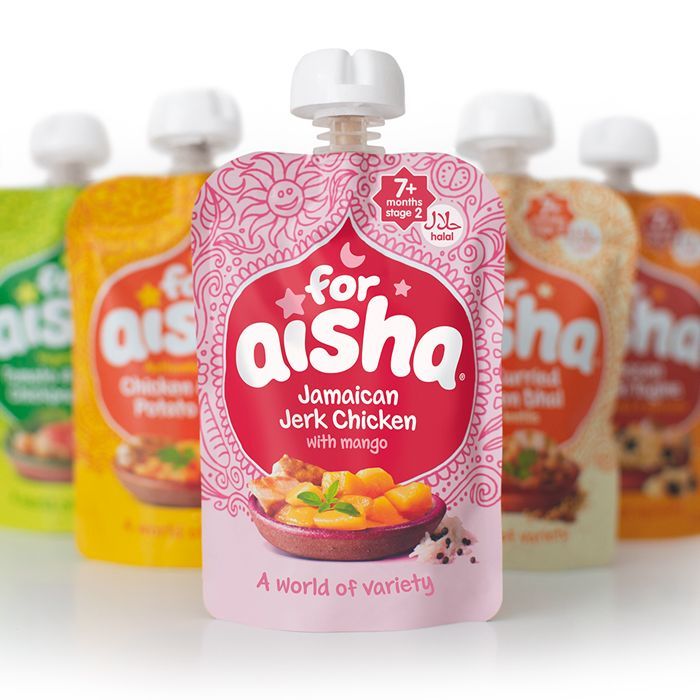 Thanks to packaging, manufacturers can create games and competitions in augmented reality mode, quickly and easily redirect the consumer to the site.
Thanks to packaging, manufacturers can create games and competitions in augmented reality mode, quickly and easily redirect the consumer to the site.
For example, last year, in partnership with the popular Shazam app, the FrutoNyanya brand released a limited series of liquid cereals with a special QR code that allows parents and kids not only to eat healthy, but also listen to fairy tales at night using augmented reality.
Packaging as a guide to the world of "adult" food
The above trends relate to the Russian market. In the West, there are ways to attract buyers. In Europe and America, brands have long been offering their young customers an "adult" range of dishes. Of course, it meets all the standards of baby food, but in terms of taste it is close to the dishes of an adult diet. This trend can also be seen in the packaging of baby food. For example, the French baby food brand Bledina offers products packaged in an airtight plastic plate. Parents warm up the dishes and, without shifting from this plate, feed the child.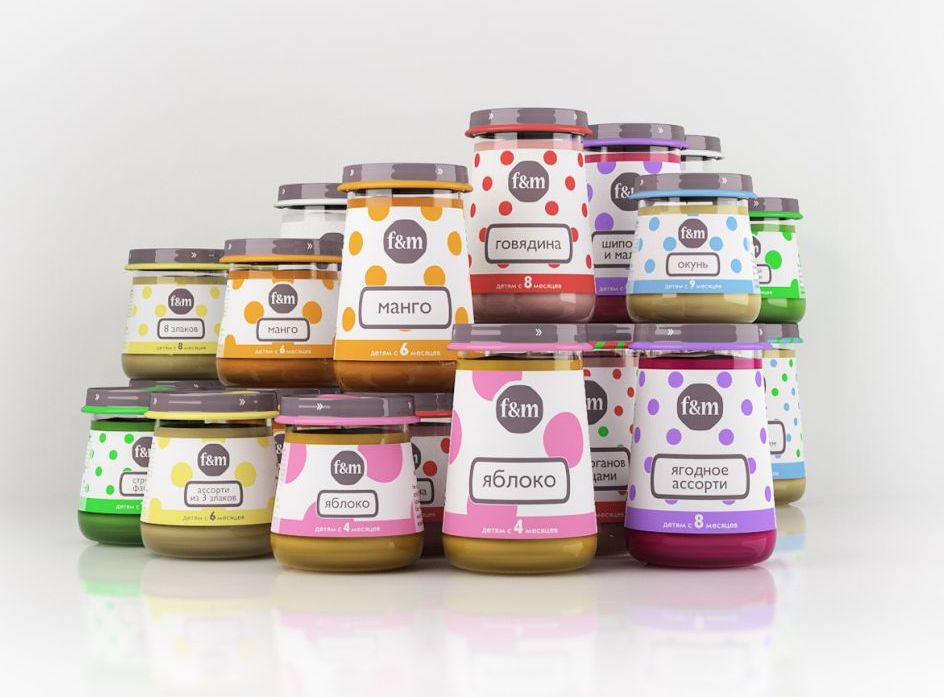 The idea of this package is that serving a dish for little ones is no different from serving for adults.
The idea of this package is that serving a dish for little ones is no different from serving for adults.
In addition, in Europe, manufacturers of children's yoghurts and puddings only offer large packages. There are no such micro-jars as we have on store shelves. Only a large amount is offered in order for the child to get used to adult standards from childhood.
* * *
It has long been clear that when choosing a product, the buyer pays attention to the additional benefits that packaging can bring. Moreover, conceptual packaging useful for a child can increase the purchase intention. And when you work with children's goods, you need to ensure that both an adult buyer and a small consumer of the product are satisfied. Thus, every year manufacturers try to come up with more and more new approaches.
Ksenia Petrova
for New Retail
Pro nutrition jars
Once we had such a conversation. .. I remember...
.. I remember...
So this is on that topic.
(Source - "Nanny" magazine, 2005 No. 2)
Myths and truth about canned food.
Specialists are of the opinion that up to a year the most optimal nutrition for a child is special canned children of industrial production. But many mothers and especially grandmothers are distrustful of canned food. And first of all, it is explained by the lack of information and the abundance of myths associated with baby food.
Myth 1: Homemade purees and juices have more vitamins than commercial baby food.
In fact: Fresh vegetables and fruits are rich in vitamins only in their "own" season. Several months of storage - even with all the norms, which, unfortunately, is extremely rare - and apart from fiber and starch, there is little left in them. When mashing fresh vegetables and fruits, most of the vitamins and nutrients also "disappear". So, when cooking, about 20% of vitamin B and more than 50% of vitamin C are lost.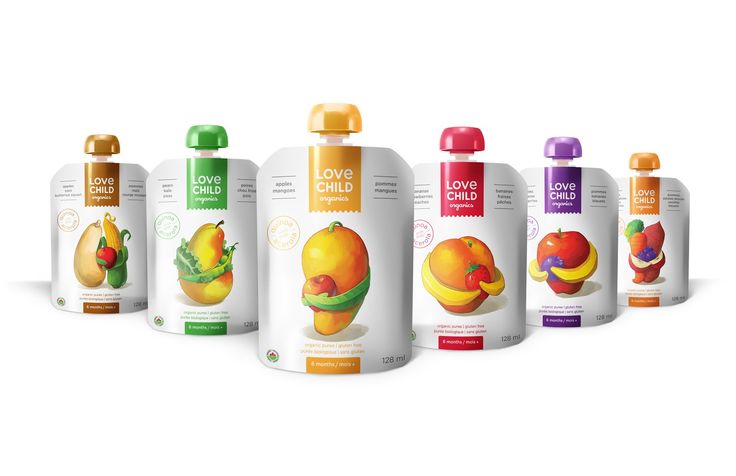 It is impossible to restore the lost “wealth” at home. But the product prepared in industrial conditions has everything you need. Some canned foods for children are additionally enriched with beta-carotene, iron, iodine, potassium and vitamin C in doses approaching the daily requirement of children of the corresponding age.
It is impossible to restore the lost “wealth” at home. But the product prepared in industrial conditions has everything you need. Some canned foods for children are additionally enriched with beta-carotene, iron, iodine, potassium and vitamin C in doses approaching the daily requirement of children of the corresponding age.
In addition, no one will give you a guarantee that the vegetables and fruits bought at the market grew in an ecologically clean area, and not on the side of the highway. When buying them, you cannot check if they contain lead and radionuclides. And, of course, no one will admit to you that they were fertilized with chemical fertilizers. Do you feed the crumbs only with what has grown in your garden and in the garden? Do you take eggs and meat from a well-known neighbor? Unfortunately, even here it is impossible to fully guarantee the safety of products. Who knows how and where a nearby industrial plant dumps waste?.. As for canned food, it is made from proven quality products grown, harvested, processed and packaged in compliance with all safety standards.
Myth 2: Canned food contains dangerous preservatives
Fact: The use of chemical preservatives in the production of baby food is prohibited. Modern heat treatment technologies and vacuum packaging provide the possibility of long-term storage of the product without their use. As a "preservative" in the industrial production of baby food, only vitamin C (ascorbic acid) is used, which does not cause any harm to the child's body and significantly increases the nutritional value of the product.
Myth 3: There are a lot of additives in baby food.
In fact: In addition to the main product, the composition of canned children really includes a certain set of components (corn or wheat starch, rice flour, etc.) Each of them performs a specific function, thereby ensuring the balance of the product due to a complementary combination various ingredients. Additional additives significantly increase the nutritional value and contribute to the easy digestibility of the product.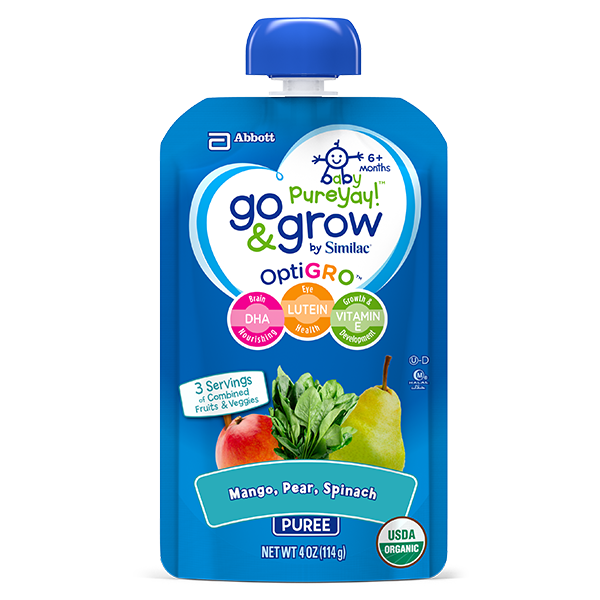 Purees and juices of industrial production correspond to the metabolic characteristics of the child's body. But the use of flavors, spices, dyes and flavorings in the production of baby food is prohibited.
Purees and juices of industrial production correspond to the metabolic characteristics of the child's body. But the use of flavors, spices, dyes and flavorings in the production of baby food is prohibited.
Myth 4: Children are allergic to canned food.
In fact: Industrially produced canned children's products are made taking into account the health characteristics of modern children. Manufacturers produce special foods for babies with intolerance to cow's milk proteins, gluten (cereal protein) or food allergies. As for the allergic reaction to canned food, in most cases it is due to improper introduction of complementary foods. Often, mothers rush ahead of time to please the kids with a new delicacy. Without knowing it, they expose the child's body to excessive stress. As a result, a child not accustomed to such delights is covered with an allergic rash. To prevent this, follow the basic rules for the introduction of complementary foods. Each new product should be given to the baby in a small amount, gradually increasing the dose.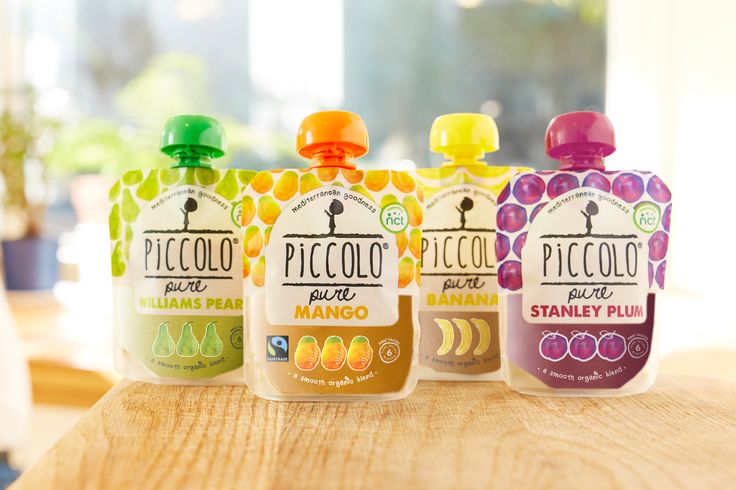 If the product causes allergies, then it should be excluded from the child's diet for a while. Practice shows that the risk of adverse reactions, if all the rules for the introduction of complementary foods for canned products are observed, is less than for homemade ones.
If the product causes allergies, then it should be excluded from the child's diet for a while. Practice shows that the risk of adverse reactions, if all the rules for the introduction of complementary foods for canned products are observed, is less than for homemade ones.
Myth 5: Canned food is more expensive.
Reality: Maybe homemade applesauce or mashed potatoes really are cheaper. But children need variety in their diet. Count how many apricots (peaches, cherries, zucchini, cauliflower) you need to cook
100 g of the corresponding puree. And how much do these products cost in winter? The simplest arithmetic calculations show that a portion of home-made puree will cost much more than a similar jar of ready-made puree. At the same time, we do not take into account the time spent searching for the necessary ingredients and preparing mashed potatoes. Not to mention the fact that, for example, it is difficult to find good fresh vegetables and fruits in winter.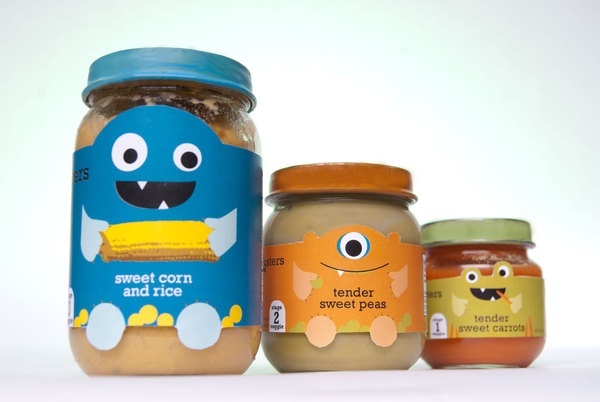
Myth 6: Freshly made puree and juice are better for children.
Reality: Indeed, sometimes children are better off eating homemade puree. This is due to the fact that, as a rule, mothers add salt or sugar to the puree to improve the taste, which are not in canned food. At the same time, children under 1.5 years of age are categorically not recommended to add salt and sweeten food. The fact is that the child's kidneys are not yet sufficiently developed and poorly remove sodium salt from the body. And an excessive amount of sugar contributes to the development of caries, puts a strain on the pancreas and forms the habit of sweets. As long as the child has not tasted salt and sugar, he can easily do without them and eat mashed potatoes from jars with pleasure. But, having recognized the salty or sweet taste, he begins to feel the need for it and categorically rejects healthy, but insipid jar food.
Myth 7: Baby food is often counterfeited.
In fact: Now in Russia there is a strict control over the quality of baby food.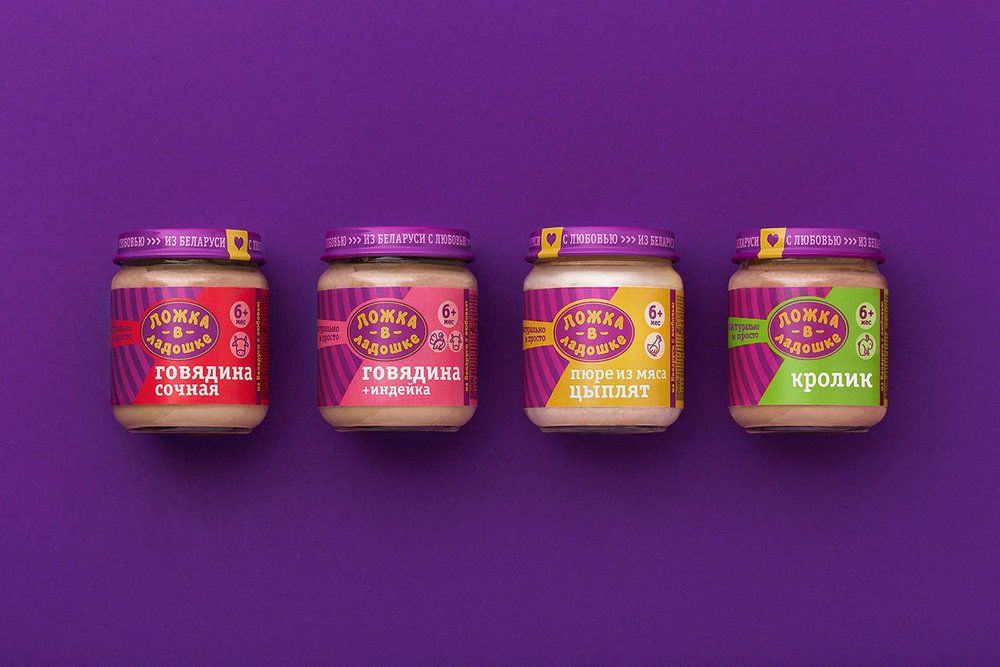 All food that goes on sale undergoes strict expert control. The examination includes an assessment of the compliance of products with safety standards, a study of nutritional value (content of proteins, fats, vitamins, etc.). An organoleptic examination is mandatory: taste, smell, color, separation / non-stratification of the product, its dissolution rate, packaging. Information in the media about withdrawals from the sale of the next batch of low-quality baby food is explained precisely by strict control over the quality of baby food. By purchasing "jars" in large stores, you protect yourself from low-quality goods.
All food that goes on sale undergoes strict expert control. The examination includes an assessment of the compliance of products with safety standards, a study of nutritional value (content of proteins, fats, vitamins, etc.). An organoleptic examination is mandatory: taste, smell, color, separation / non-stratification of the product, its dissolution rate, packaging. Information in the media about withdrawals from the sale of the next batch of low-quality baby food is explained precisely by strict control over the quality of baby food. By purchasing "jars" in large stores, you protect yourself from low-quality goods.
Myth 8: After canning, it will be difficult for a child to switch to an "adult" table.
In fact: Difficulties in the transition from ready-made food to the “adult” table are associated with the use of canned food that is inappropriate for the age of the baby. Often, mothers up to 10-12 months feed the baby puree intended for 3-4-month-old crumbs, and then abruptly transfer it to “solid” food.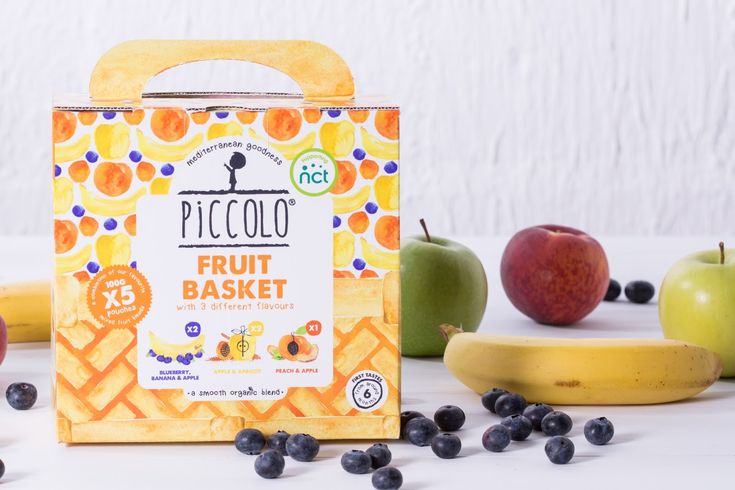 Such a sharp transition will not only be difficult for the baby, but will also adversely affect the work of the gastrointestinal tract. In this case, the child "skips" the food intended for 6, 8 and 10-month-old children, and his body remains unprepared for the transition to the "adult" table. After all, ready-made food is produced with different degrees of grinding. For children up to 6 months - homogenized purees, for 6-8-month-old babies - puree, and for children over 9months with teeth - coarsely ground products. Depending on the age of the child, the development of the skill of chewing, he needs to buy products, taking into account the degree of their grinding - from homogenized puree to those containing small pieces. Canned nutrition, appropriate for age, gradually "prepares" the child's gastrointestinal tract for "adult" food. While at home it is very difficult to monitor the consistency of mashed potatoes and gradually change it.
Such a sharp transition will not only be difficult for the baby, but will also adversely affect the work of the gastrointestinal tract. In this case, the child "skips" the food intended for 6, 8 and 10-month-old children, and his body remains unprepared for the transition to the "adult" table. After all, ready-made food is produced with different degrees of grinding. For children up to 6 months - homogenized purees, for 6-8-month-old babies - puree, and for children over 9months with teeth - coarsely ground products. Depending on the age of the child, the development of the skill of chewing, he needs to buy products, taking into account the degree of their grinding - from homogenized puree to those containing small pieces. Canned nutrition, appropriate for age, gradually "prepares" the child's gastrointestinal tract for "adult" food. While at home it is very difficult to monitor the consistency of mashed potatoes and gradually change it.
Benefits:
Canned food contains all the necessary nutrients, vitamins and trace elements in the right amount.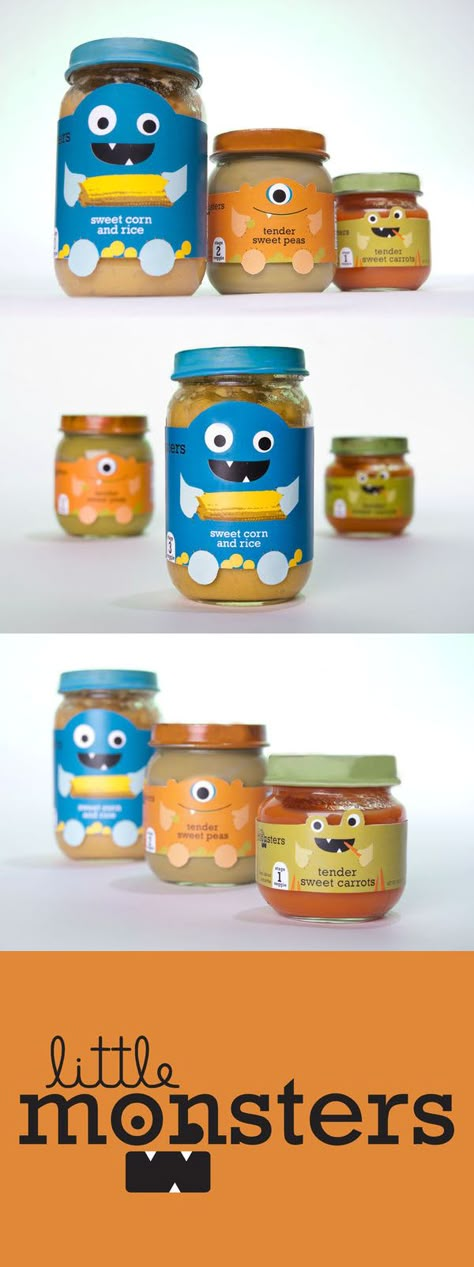
The consistency of commercial puree is appropriate for the baby's age. While at home it is almost impossible to regulate the degree of grinding of the products that make up the puree.
Canned food does not contain salt or sugar.
Canned baby food made from environmentally friendly raw materials.
Canned food provides the child with a varied diet.
Using commercial puree saves time. It is enough just to warm up the jar.
Ready meals are easy to transport. You can take a jar with you on the road, on a visit or on a picnic. You will always have the opportunity to provide your baby with a complete diet.
When buying canned food, pay attention to:
Integrity of packaging: if the jar or lid is damaged, then you should not buy such food in any case.
Date of manufacture and expiration date: it is necessary to check that the product is fit for consumption. On baby food, as a rule, expiration dates are displayed on the bottom or on the lid of the jar.


